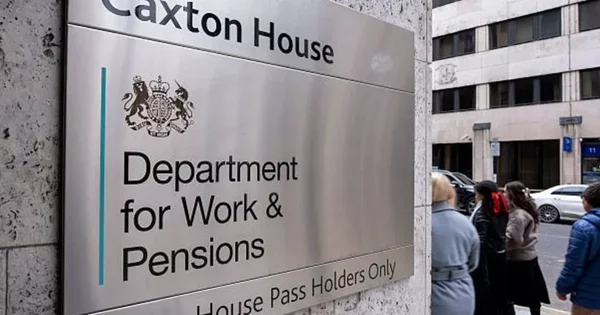
In October 2024, the Labour government, under Chancellor Rachel Reeves, announced significant changes to the UK's capital gains tax (CGT) structure as part of its Autumn Budget.
These reforms aim to increase public revenue and address fiscal challenges. However, they have sparked concerns among property owners, investors, and business stakeholders about potential financial implications. This article delves into the specifics of the CGT reforms, their anticipated impact on various sectors, and the broader economic context driving these changes.
Key Changes in Capital Gains Tax
The Labour government has introduced a series of significant Capital Gains Tax (CGT) reforms. From 30 October 2024, the lower CGT rate rose from 10% to 18%, while the higher rate increased from 20% to 24%.
However, CGT rates on residential property sales remain unchanged at 18% for basic rate taxpayers and 24% for higher rate taxpayers. Business Asset Disposal Relief, previously known as Entrepreneurs' Relief, continues at 10% for now but will rise to 14% in April 2025 and 18% in 2026.
Additionally, the annual CGT exemption has been sharply reduced, dropping from £12,300 in 2022/23 to just £3,000 in the current tax year, significantly lowering the threshold before tax becomes payable.
Implications for Property Owners and Investors
The Capital Gains Tax (CGT) reforms carry substantial implications for property owners, especially landlords and investors. One of the most immediate effects is the potential for increased tax liabilities. Landlords selling properties particularly those acquired before 2005, could see their CGT bills rise significantly, with some facing increases of up to 67%.
This translates to an average tax bill of £90,000, compared to £54,000 under previous rules. In response to these changes, market behaviour is already shifting. Many investors are rushing to sell off assets, including properties and shares, in a bid to lock in gains at current tax rates. Wealth managers have noted a sharp uptick in these transactions, driven largely by fears of further tax hikes.
Beyond immediate sales, the reforms may also influence long-term investment decisions. The heightened tax burden could discourage new investments in the property market, particularly within the buy-to-let sector, which may, in turn, impact both housing supply and the broader rental market.
Economic Context and Government Rationale
The CGT reforms form a key part of the Labour government’s wider strategy to tackle pressing fiscal challenges. Central to this approach is the goal of revenue generation, with the government aiming to raise £2.5 billion through these changes to help fund public services and begin reducing the national debt, which currently stands at £2.8 trillion.
Chancellor Rachel Reeves has stressed the importance of making “difficult decisions” on spending, welfare, and taxation in order to address a £22 billion shortfall in public finances. While these tax increases may seem burdensome, the government argues they are balanced by the UK’s continued economic competitiveness, noting that even after the reforms, the country will retain the lowest CGT rates among European G7 nations.

Stakeholder Responses
The CGT reforms have sparked a range of responses across different sectors. Within the business community, there is concern that the increased tax burden could deter entrepreneurship and investment, potentially hindering economic growth.
Wealth managers have also observed a growing sense of unease among clients, many of whom are choosing to liquidate assets now in anticipation of higher tax liabilities in the future. Public opinion remains divided, while some view the reforms as a necessary step to fund vital public services, others are apprehensive about the possible negative consequences for the property market and the broader economy.

Fun Fact
Despite the CGT rate increases, the UK still maintains the lowest capital gains tax rates among European G7 countries.
This positioning reflects the government's attempt to balance fiscal responsibility with maintaining an attractive investment climate.
Conclusion
Labour's CGT reforms aim to bolster public finances but raise concerns among property owners and investors. In conclusion, the Labour government's recent capital gains tax reforms represent a significant shift in the UK's fiscal policy, aiming to address budgetary shortfalls and fund public services.
While these changes are poised to increase tax revenues, they also introduce complexities and potential challenges for property owners, investors, and the broader economy. Stakeholders must navigate this evolving landscape carefully, balancing financial planning with the implications of the new tax regime.
Frequently Asked Questions
What are the new capital gains tax rates introduced by the Labour government?
The lower CGT rate has increased from 10% to 18%, and the higher rate from 20% to 24%. Rates for residential property remain at 18% and 24% for basic and higher rate taxpayers, respectively.
How will these changes affect landlords selling their properties?
Landlords may face higher tax liabilities, with potential CGT bills increasing by up to 67%, depending on the property's purchase date and value appreciation.
Are there any changes to Business Asset Disposal Relief?
Yes, the relief rate remains at 10% for the current year but will increase to 14% in April 2025 and 18% in 2026.
What is the rationale behind these tax reforms?
The government aims to raise £2.5 billion to fund public services and address a £22 billion shortfall in public finances.
How does the UK's CGT compare internationally after these changes?
Despite the increases, the UK still has the lowest CGT rates among European G7 countries, maintaining its competitiveness for investors.









